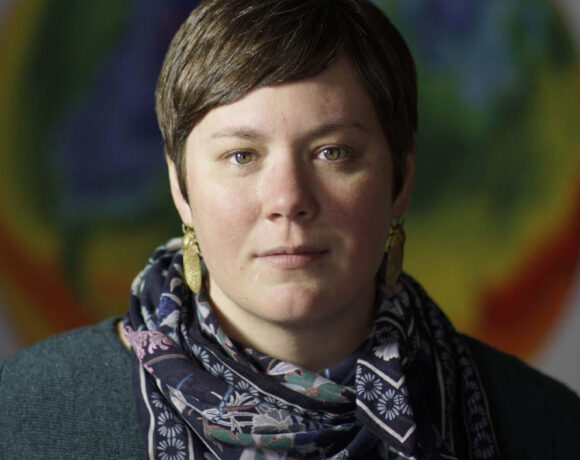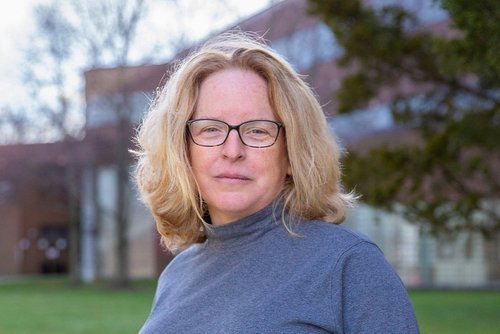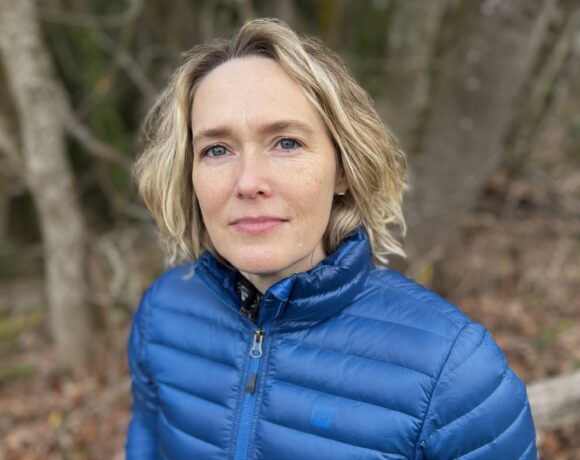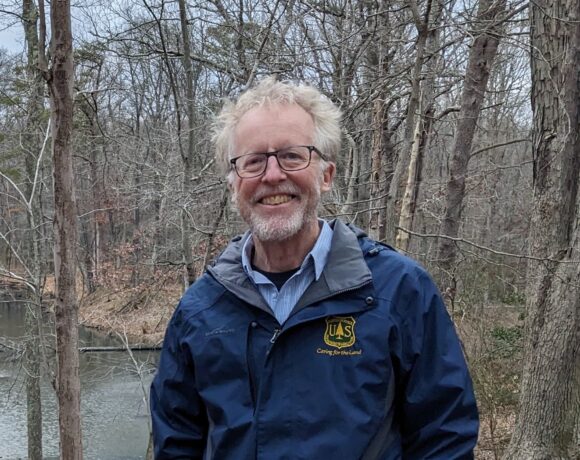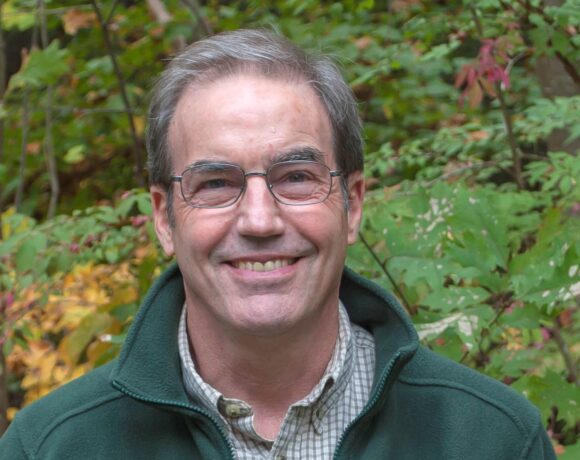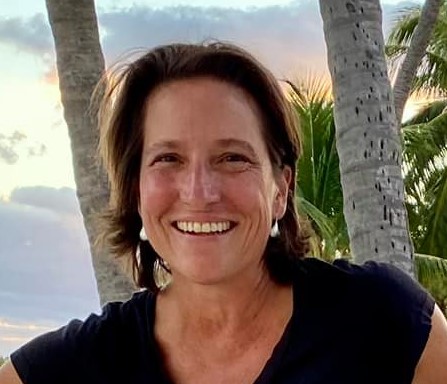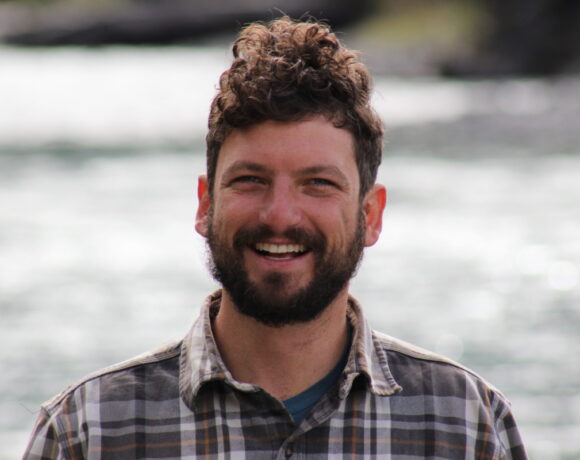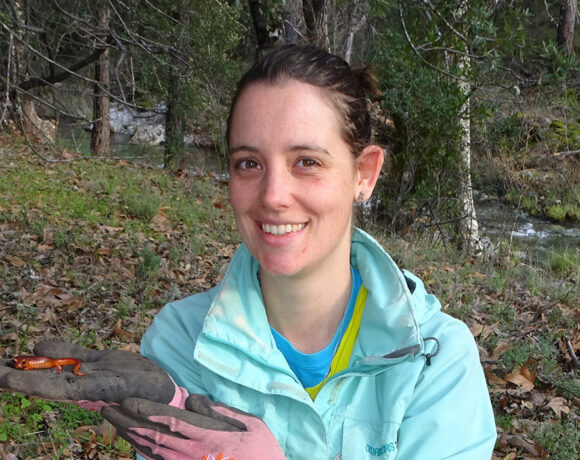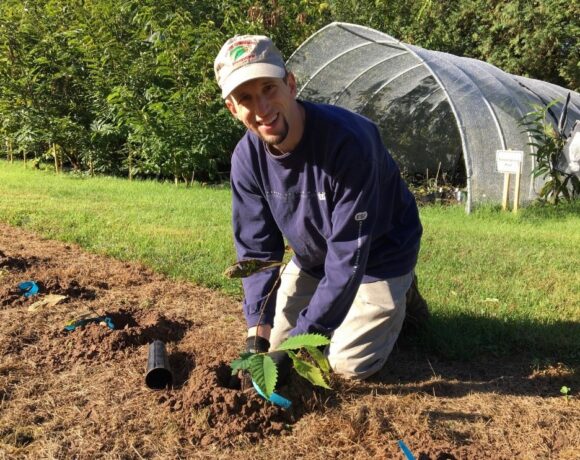Dr. Jessica Rogers focuses her research on documenting the infestation of purple loosestrife in the North Country. NYISRI is pleased to feature her work in this month’s researcher spotlight:
What kinds of research questions related to invasive species are you currently asking?
My research focuses on documenting the infestation of purple loosestrife in the North Country. I wanted to understand how widely it was spreading, and then, ultimately, how to control it. I want to understand how prevalent the biological control beetles were in our area. I have also been working with the department of transportation to understand how mowing might influence the spread along highways.
What are the basic methods you are using to answer your research questions?
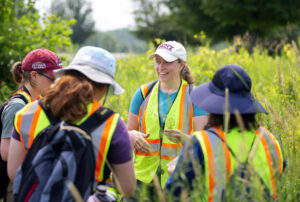 I work with student researchers in the summer to map all the infestations along about 150 miles of state highways. We use an app on our phones that records basic information and size of all infestations. To raise beetles we’ve built artificial wetlands at SUNY Potsdam where we’ve propagated more than 14,000 Galerucella beetles to ask as a control and released them throughout the county.
I work with student researchers in the summer to map all the infestations along about 150 miles of state highways. We use an app on our phones that records basic information and size of all infestations. To raise beetles we’ve built artificial wetlands at SUNY Potsdam where we’ve propagated more than 14,000 Galerucella beetles to ask as a control and released them throughout the county.
Do you have a personal story or path that led to your interest in this research?
I grew up in Potsdam, NY and when I returned after graduate school, the wetlands in the North County along the major highways had changed. They were no longer crowded with only native vegetation, but seemed very overrun with single species – particularly purple loosestrife. This led me to want to understand the problem and the NYS DEC website only had a few recorded incidences, so I began a project to make the story clearer.
How does your research relate to a wider field of invasive species prevention/management?
As part of the first grant I got from the St. Lawrence River Research and Education Fund from the New York Power Authority, they asked me to identify any other invasive plants surrounding purple loosestrife. This led to the beginning of understanding how widespread different invasions are in the same ecosystem. In addition, being one of the people actually growing a biological control has given me some insight into how that same process might work to control more invasive plants in our area.
What’s the most important thing about your research for stakeholders, managers, or policy makers to know?
Purple loosestrife, along with many invasive species, is here to stay. However, that doesn’t mean giving up – it means finding ways to bring it under control in our ecosystem. The wetland ecosystem evolves naturally, and adding many invasive plants disrupts that change, but it doesn’t have to end the ecosystem. Finding ways to control, mitigate, and where necessary eliminate species, is crucial. There’s no one-size-fits-all management style for invasive species, but many species can be controlled and brought into balance with our native systems.
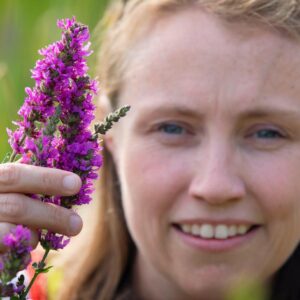 What do you hope the long-term impact of your work will be?
What do you hope the long-term impact of your work will be?
I hope to work myself out of a job – that my expertise will no longer be necessary because purple loosestrife will be a managed part of the ecosystem and we can appreciate its beauty. However, realistically, I hope my work can be a catalyst for more management of invasive plants in the under-studied region of Northern New York.
Is there anything else you’d like to add or tell us about your work?
Much of this work has been done with student interns, and creating specific guidebooks for them has been extremely rewarding. Instead of asking them to learn to identify all the possible grasses and weeds in the world, we’ve created a curated guide to our region so they’re aware of all the native and invasive plants that have been found in our region.
Read Dr. Rogers’ recent paper on controlling purple loosestrife
Read more researcher spotlights:




